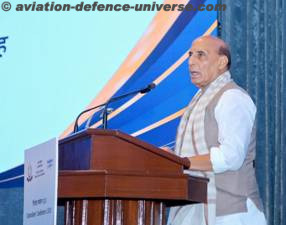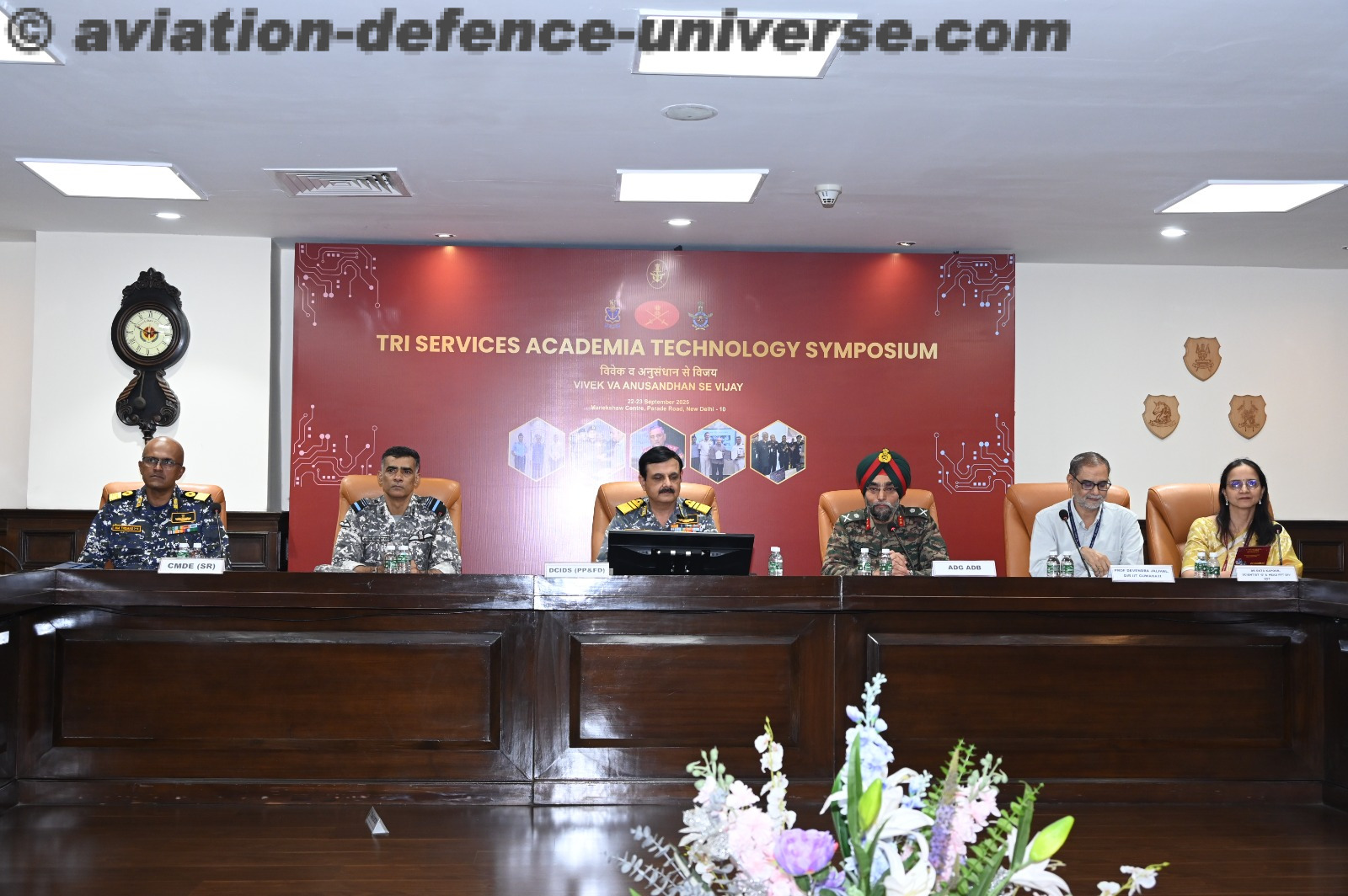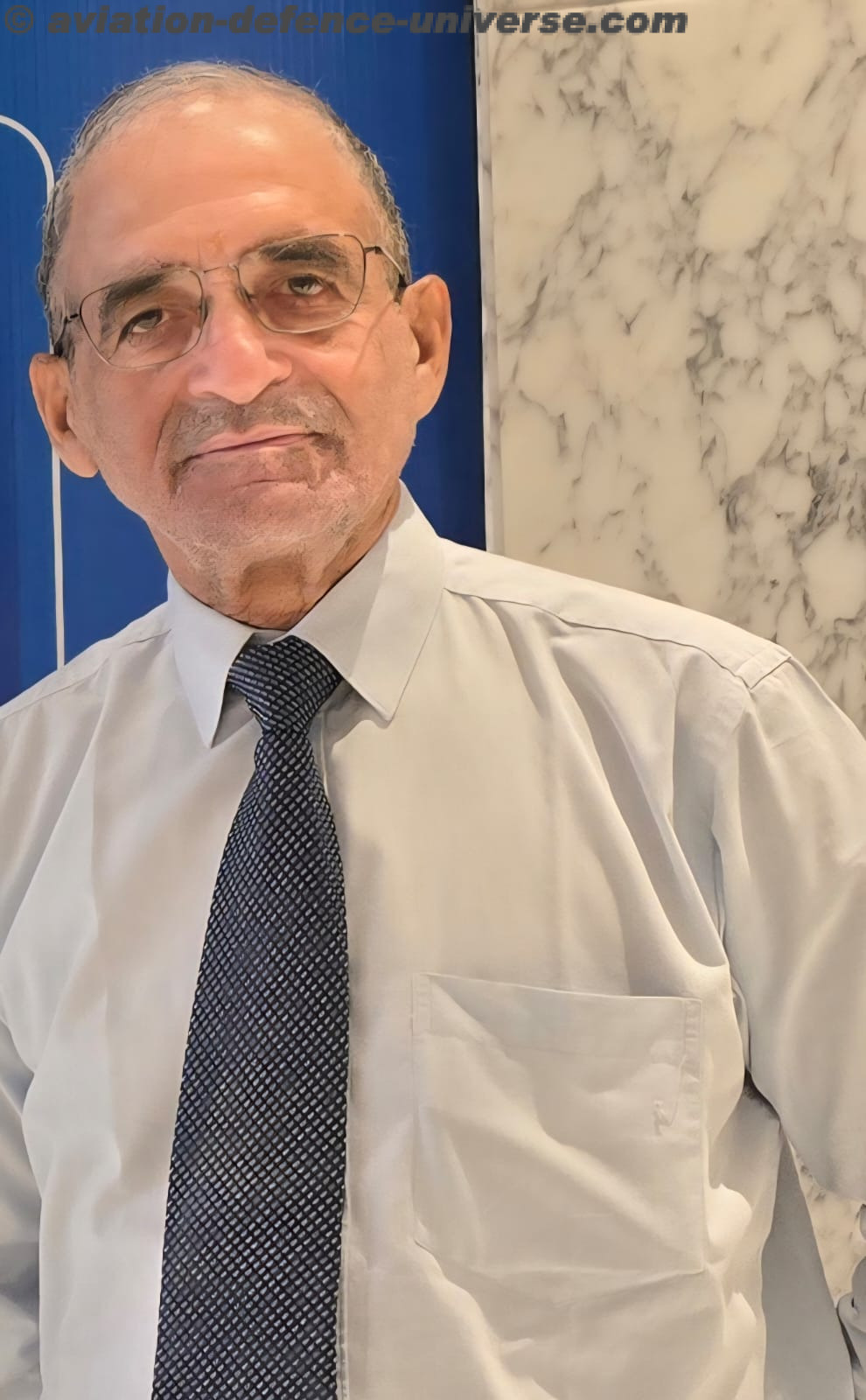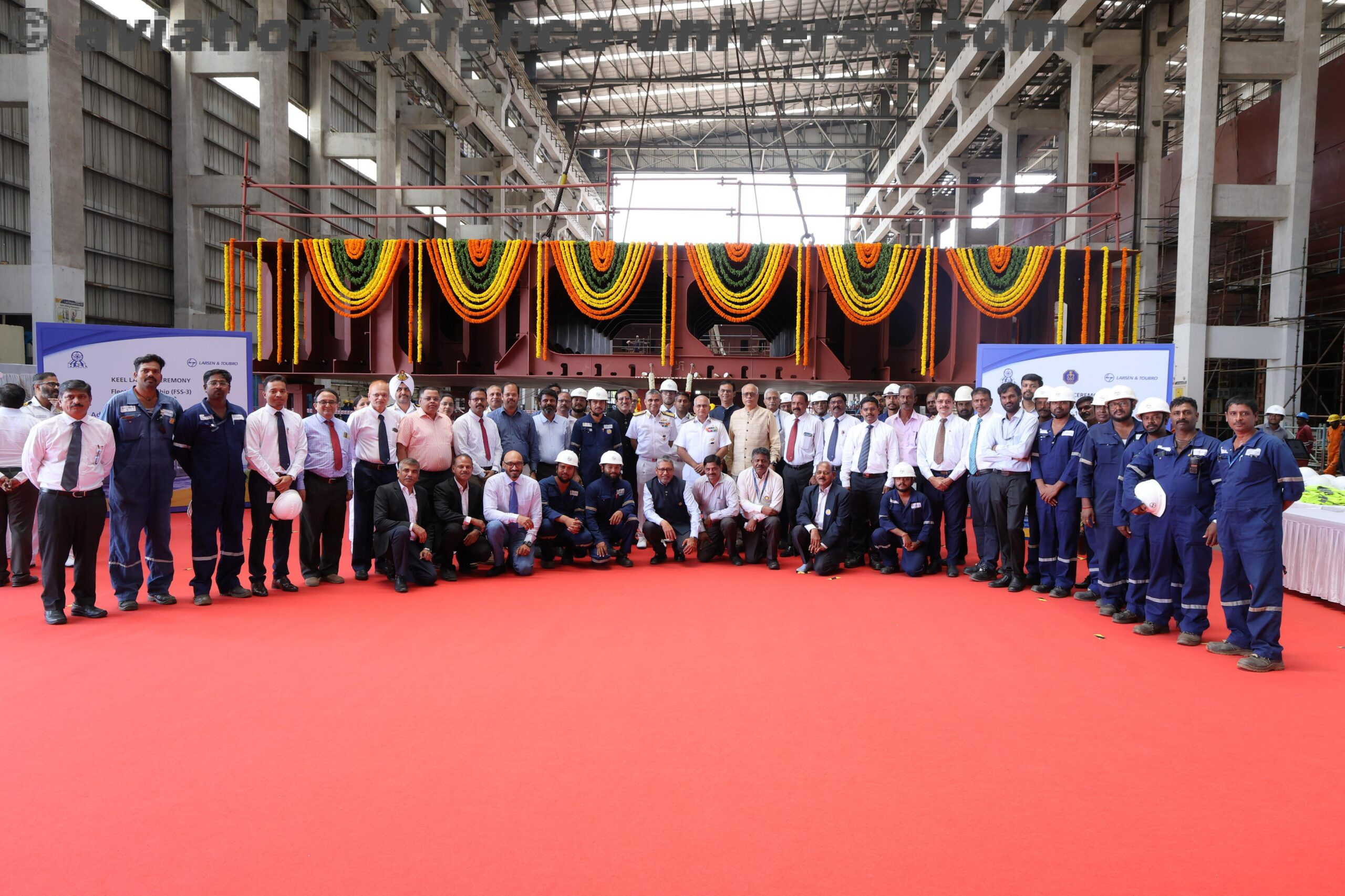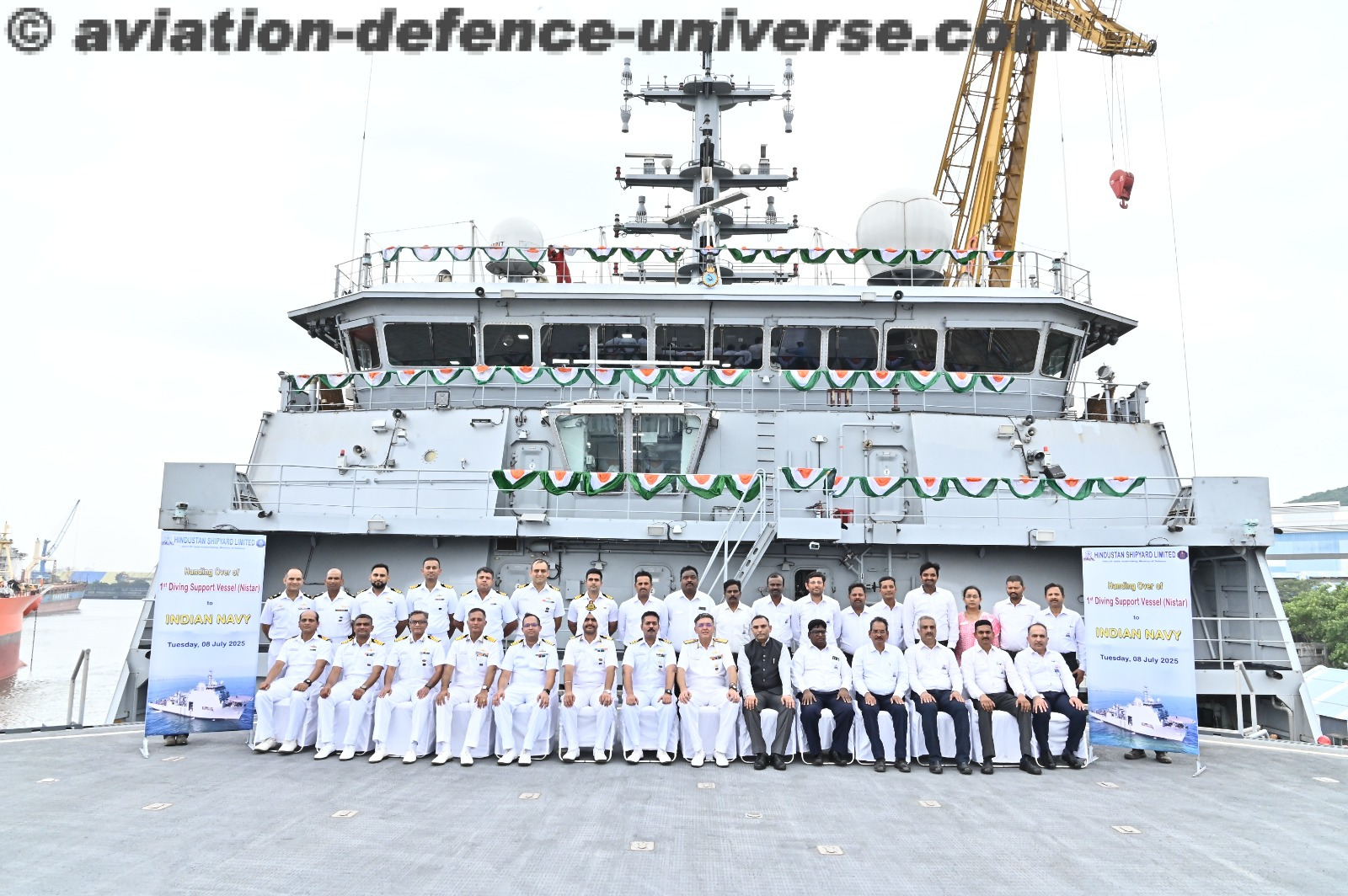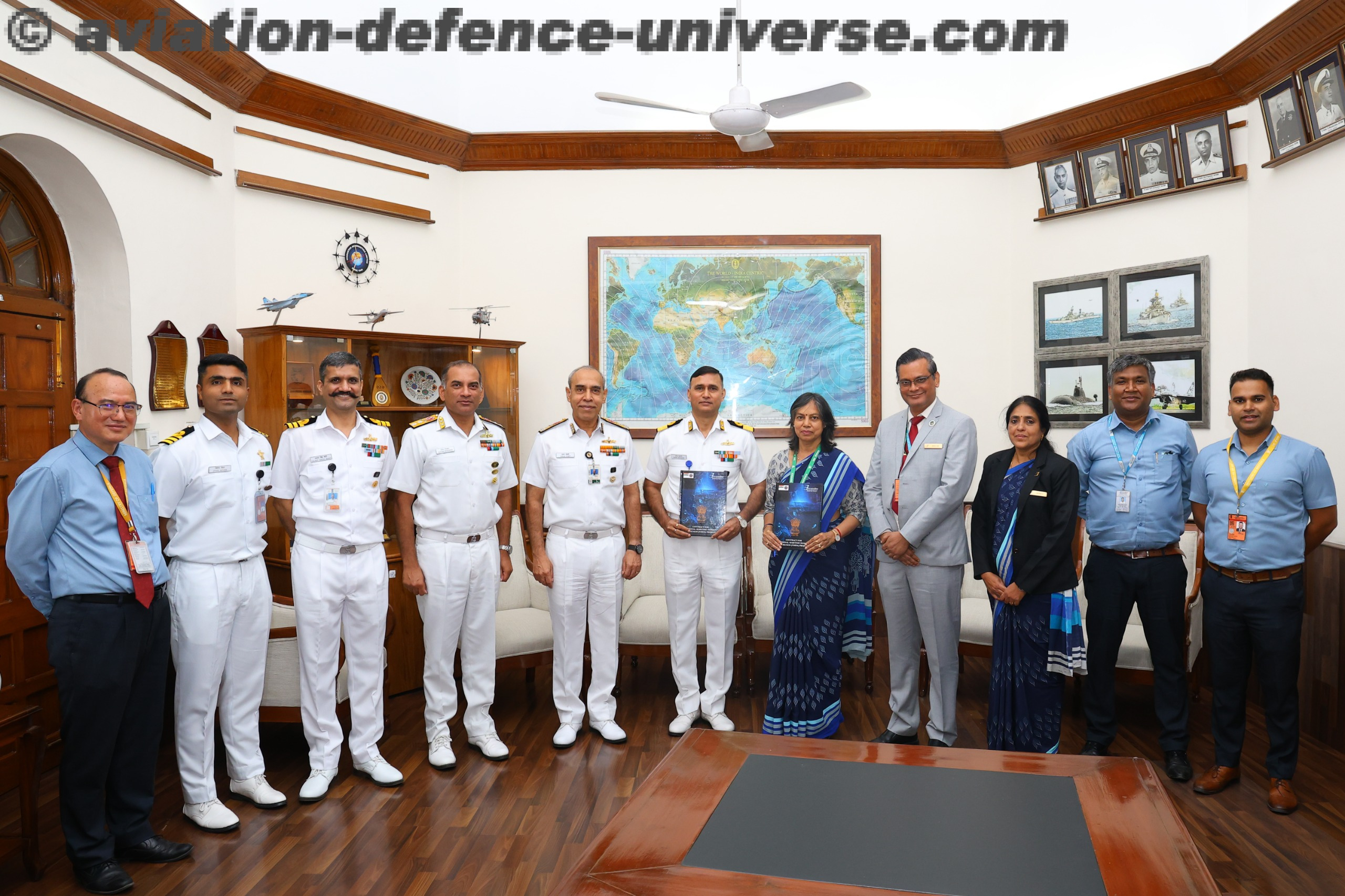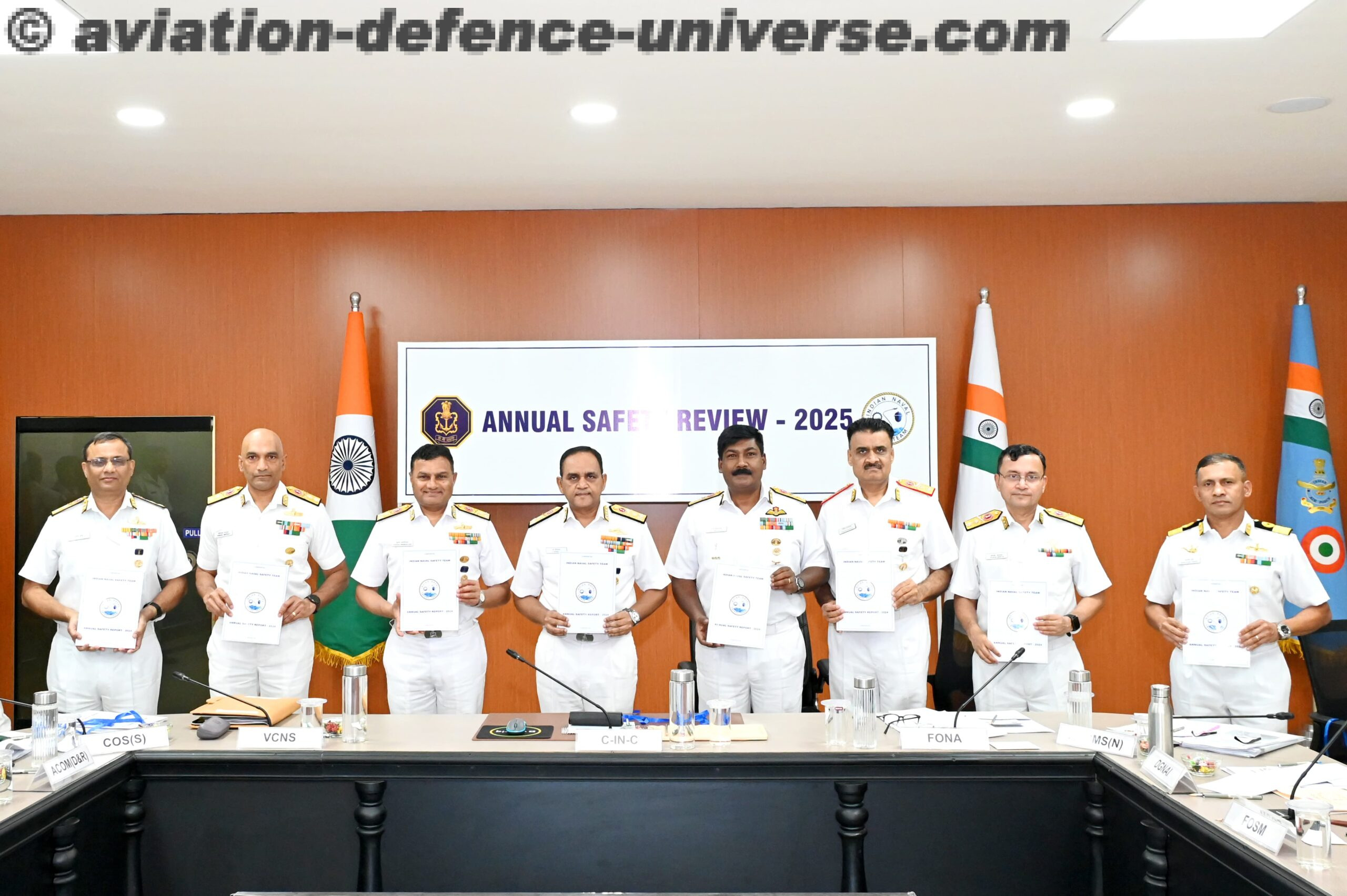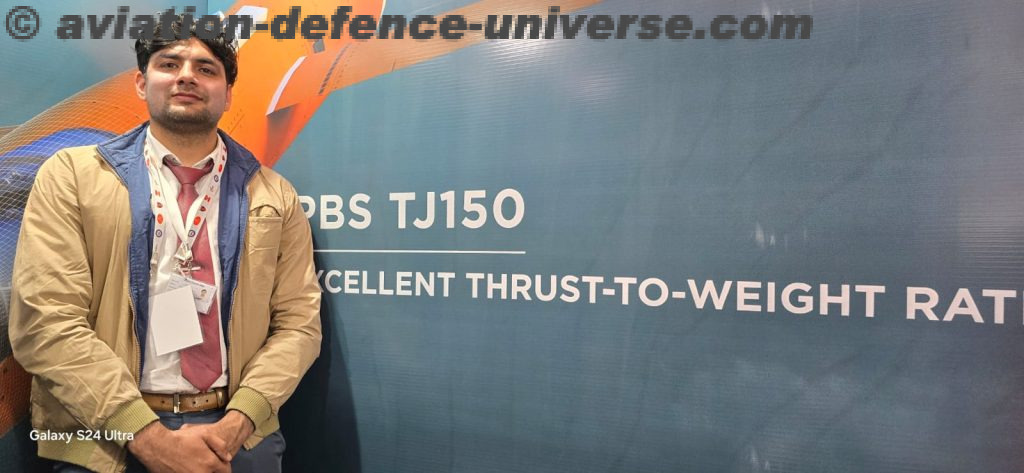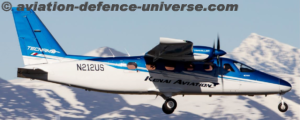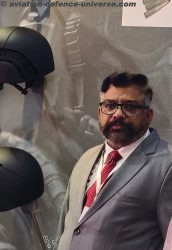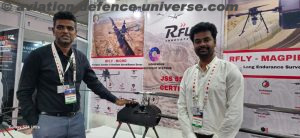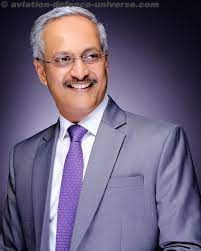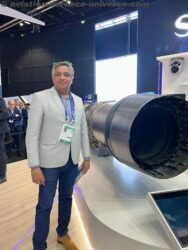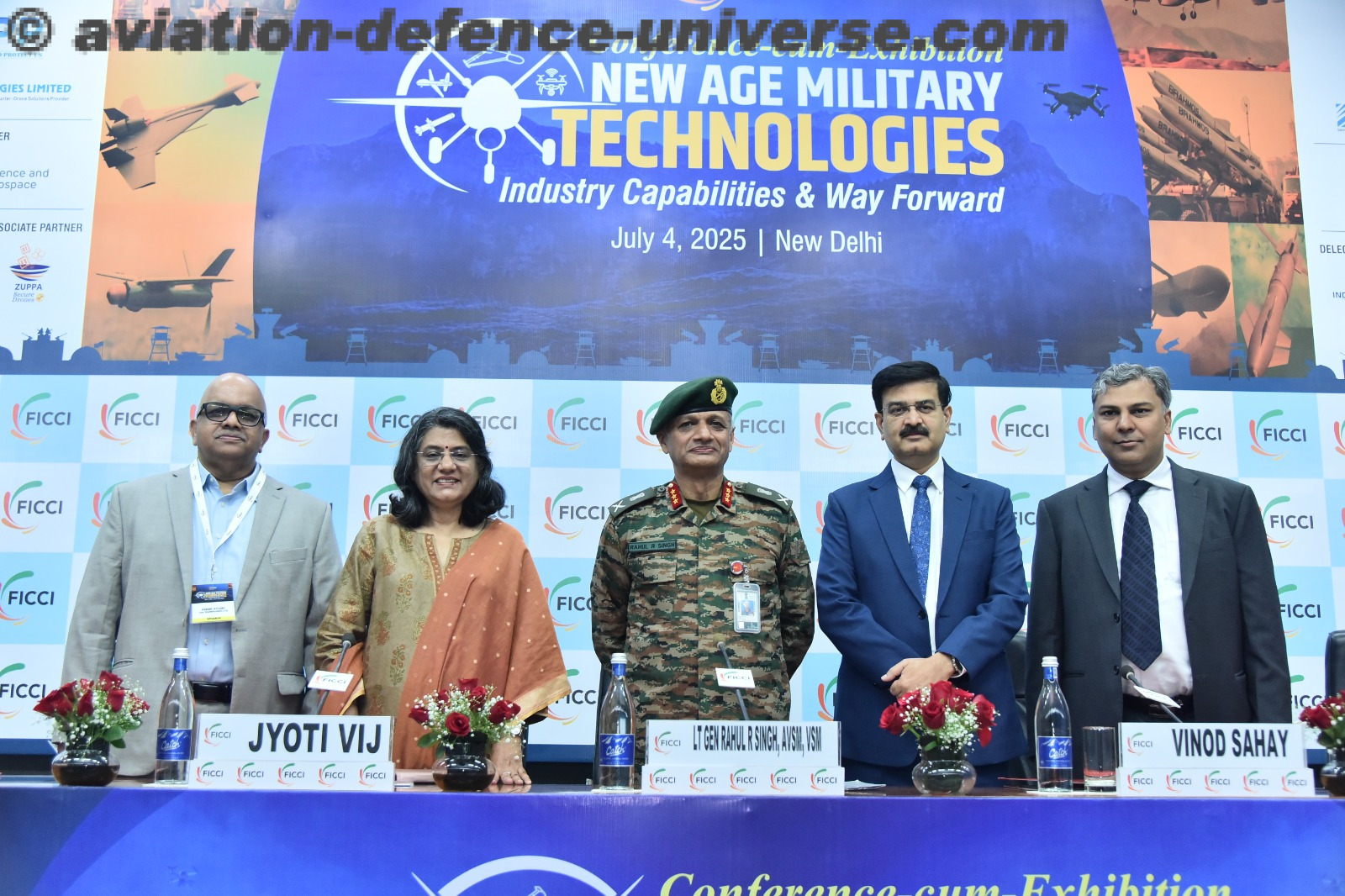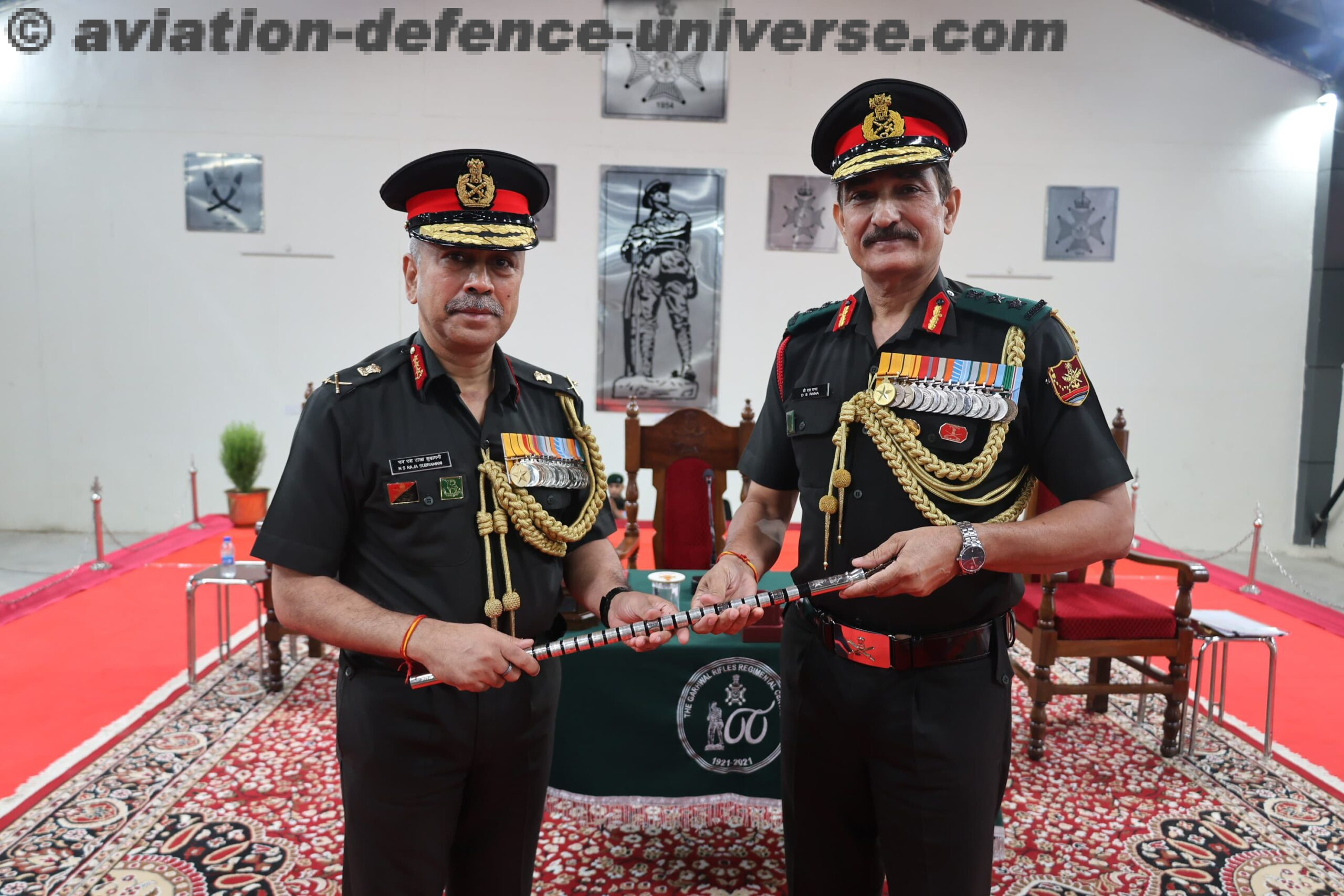By Sangeeta Saxena
Leh, Ladakh. 21 September 2024. At HIMTECH 2024, cutting-edge innovations for high-altitude warfare are on full display, with one standout technology being turbojet-powered drones designed for the Indian Armed Forces. PBS INDIA PRIVATE LIMITED, a Subsidiary Group Company of PBS GROUP A.S, Czech Republic, is spearheading these advancements with solutions aimed at overcoming the challenges of high-altitude operations. Aviation & Defence Universe (ADU) spoke with Ankit Yadav, Sales Manager, PBS India to discuss the future of turbojet propulsion systems, how they are tailored for the Indian military’s needs, and their broader applications across civil and defence sectors.
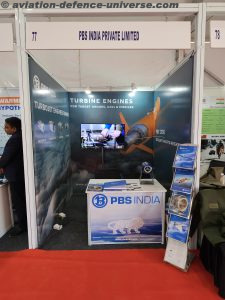 “PBS India is addressing a critical challenge faced by the Indian Army in high-altitude warfare by developing jet-based kamikaze drones. These drones, powered by turbojet engines, are designed for high-speed and high-altitude operations where traditional electric-powered drones fail to perform effectively. At altitudes like 6,500 meters, the efficiency of electric propulsion systems significantly drops, making them less viable for combat missions. Turbojet engines, however, offer a tactical advantage by providing greater power and efficiency at such extreme altitudes. These drones are mission-oriented and compact, enabling special operations to be conducted with high reliability. Capable of reaching speeds of 700 km/h, they can deliver a powerful, agile strike, making them ideal for surprise attacks that require rapid response and precision,” informed Ankit Yadav.
“PBS India is addressing a critical challenge faced by the Indian Army in high-altitude warfare by developing jet-based kamikaze drones. These drones, powered by turbojet engines, are designed for high-speed and high-altitude operations where traditional electric-powered drones fail to perform effectively. At altitudes like 6,500 meters, the efficiency of electric propulsion systems significantly drops, making them less viable for combat missions. Turbojet engines, however, offer a tactical advantage by providing greater power and efficiency at such extreme altitudes. These drones are mission-oriented and compact, enabling special operations to be conducted with high reliability. Capable of reaching speeds of 700 km/h, they can deliver a powerful, agile strike, making them ideal for surprise attacks that require rapid response and precision,” informed Ankit Yadav.
Currently, the Indian Army relies on electrical propulsion for its loitering munitions, but PBS India is aiming to shift this preference by showcasing the superior performance of turbojet technology at HIMTECH 2024. According to PBS, turbojet-powered drones can act as force multipliers, enhancing both mission effectiveness and the Army’s overall combat capability. The Army Design Bureau has already included jet-based solutions in its compendium, and PBS India is pushing for greater industry involvement to integrate turbojet engines into the Army’s inventory. PBS India’s goal is to bring innovative, high-altitude solutions to the forefront, leveraging the performance and design benefits of turbojet engines for both military and strategic operations.
Yadav added, “The second solution PBS India is proposing for the Indian Army involves utilizing turbojet engines for logistics operations. Rather than relying on electric propulsion, PBS suggests using turbojet engines for heavy-lift capabilities at high altitudes. These turbojet-powered drones could carry payloads of up to 180 kg, performing tasks similar to helicopters but without the need for a runway. The drones would be able to take off from mountain bases, deliver supplies, and return—making them ideal for operations in remote, high-altitude regions. This logistics solution could also be configured in a hybrid setup, providing flexibility for various missions. Drawing from the experience of international customers, particularly in Europe, PBS India highlights that similar systems are already in use for tasks like firefighting and logistics in challenging environments. The Indian Armed Forces should consider to adopt similar Turbojet solution to have a High Altitude Operational advantages .”
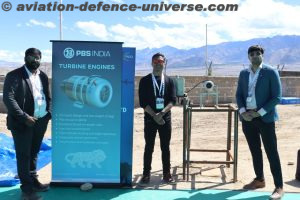 PBS India is already aligning to” Make In India” policy by moving toward localizing the manufacturing of the small 425 Newton turbojet engines, with component production underway and plans to achieve around 80% indigenous content. Over the next year and a half, the company aims for full production and Testing of Turbojet Engines locally in India. Beyond the Indian Army, PBS India sees potential applications for this high-altitude logistics solution in states with challenging terrain, such as Jammu & Kashmir, Ladakh, Arunachal Pradesh, Nagaland, and Uttarakhand. These regions have security and homeland defence needs that could benefit from the advanced capabilities of turbojet-powered drones. Additionally, PBS India notes the system’s versatility for civil applications, referencing the use of drones with Bambi buckets for firefighting,. By tapping into both military and civil needs, PBS is positioning itself as a key player in bringing turbojet technology to high-altitude, high-demand environments.
PBS India is already aligning to” Make In India” policy by moving toward localizing the manufacturing of the small 425 Newton turbojet engines, with component production underway and plans to achieve around 80% indigenous content. Over the next year and a half, the company aims for full production and Testing of Turbojet Engines locally in India. Beyond the Indian Army, PBS India sees potential applications for this high-altitude logistics solution in states with challenging terrain, such as Jammu & Kashmir, Ladakh, Arunachal Pradesh, Nagaland, and Uttarakhand. These regions have security and homeland defence needs that could benefit from the advanced capabilities of turbojet-powered drones. Additionally, PBS India notes the system’s versatility for civil applications, referencing the use of drones with Bambi buckets for firefighting,. By tapping into both military and civil needs, PBS is positioning itself as a key player in bringing turbojet technology to high-altitude, high-demand environments.
Ankit added, “ Definitely. Regions like J&K, Ladakh, and the Northeastern states have similar requirements due to their challenging terrains. Even homeland security and police forces could benefit from this technology. These high-altitude zones need robust solutions, and turbojet engines can provide the necessary speed and power to support both security and humanitarian efforts in these areas. Absolutely. One of our solutions involves using turbojet engines for heavy-lift drones capable of carrying around 180 kg at high altitudes. These drones can take off without a runway, operate from mountain bases, and deliver supplies to troops stationed at high altitudes. It’s essentially a helicopter’s function, but without the logistical complexities. We envision these drones supporting the Army in tough terrains where traditional supply routes are at times impossible to traverse.”
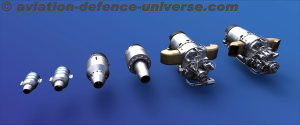 PBS India specializes in the production of turboprop engines, This makes them ideal for use in light aircraft in civil aviation as well as unmanned aerial vehicles (UAVs). PBS India manufactures and supplies these high-efficiency turboprop engines to clients worldwide, delivering reliable performance for a range of aviation applications.
PBS India specializes in the production of turboprop engines, This makes them ideal for use in light aircraft in civil aviation as well as unmanned aerial vehicles (UAVs). PBS India manufactures and supplies these high-efficiency turboprop engines to clients worldwide, delivering reliable performance for a range of aviation applications.
“The Ukrainian war has shown us the strategic importance of turbojet technology. The U.S. and other military powers have been using turbojet-based drones effectively. There’s a lesson here for India—we need to move beyond conventional electric propulsion and adopt more advanced technologies that are being utilized globally. If we don’t venture into turbojet solutions now, we risk falling behind. Turbojet engines perform significantly better at high altitudes compared to electric propulsion. The Indian Army’s current loitering munitions primarily rely on electric systems, but at extreme heights, their performance drops. Turbojet technology, by contrast, offers greater efficiency and power. It’s a force multiplier, delivering speed and precision that make it indispensable for missions in areas like the Himalayas. We’re here to demonstrate that Indian forces can benefit from these advancements, and we’re working with the Army Design Bureau to integrate such solutions into their operations, “ he reiterated.
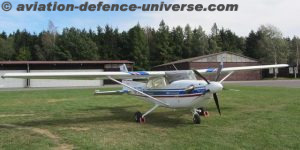 PBS India also specializes in the production of high-quality turboshaft engines, which operate on a similar principle to turboprop engines. Turboshaft engines are commonly used to power helicopters and hovercraft. One of their key advantages is their ability to enable vertical takeoff and landing (VTOL), making them invaluable in areas with restricted landing options. This capability is particularly crucial for emergency rescue services, where rapid deployment and flexibility are essential.
PBS India also specializes in the production of high-quality turboshaft engines, which operate on a similar principle to turboprop engines. Turboshaft engines are commonly used to power helicopters and hovercraft. One of their key advantages is their ability to enable vertical takeoff and landing (VTOL), making them invaluable in areas with restricted landing options. This capability is particularly crucial for emergency rescue services, where rapid deployment and flexibility are essential.
“PBS India specializes in the production of small turbojet engines, a key category within the aircraft engine industry. The primary advantage of PBS India’s turbojet engines lies in their exceptional weight-to-thrust ratio, making them highly suitable for military applications and favoured in the experimental aviation sector. With the growing use of unmanned aircraft, these engines are increasingly integrated into UAVs (Unmanned Aerial Vehicles), particularly in the military domain. PBS has successfully designed, developed, and launched a range of compact turbojet engines, with more than 2500 of its units powering unmanned systems, drones, powered gliders, and experimental aircraft worldwide. The PBS TJ100, part of the 4th generation of this engine type, exemplifies the company’s innovation. PBS India supplies this complete range of turbojet engines across the country, supporting both military and civilian aviation needs, ” Ankit elaborated.
PBS India is a leader in aerospace engineering, specializing in the in-house development, production, testing, and certification of small turbojet, turboprop, and turboshaft engines, along with auxiliary power units (APUs) and environmental control systems (ECS). The company’s turbojet engines, renowned for their excellent thrust-to-weight ratio and a thrust range of 400 to 1,500 Newtons, are recognized among the best in their class globally.
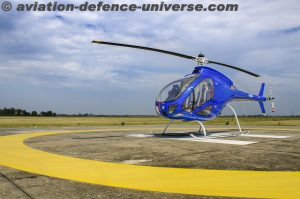 “APUs and ECS systems from PBS have been proven in thousands of airplanes and helicopters worldwide, reflecting their reliability and superior performance. PBS operates under a rigorous quality management system, certified to meet ISO 9001, AS 9100, ISO 14001, and Nadcap standards. Additionally, the company holds Design Organisation Approval (DOA), Production Organisation Approval (POA), and Maintenance Organisation Approval (MOA) from the European Aviation Safety Agency (EASA). Beyond aerospace, PBS India’s manufacturing program extends to precision casting, machining, surface treatments, and cryogenics, producing advanced helium turboexpanders and low-temperature compressors for various applications,” he updated.
“APUs and ECS systems from PBS have been proven in thousands of airplanes and helicopters worldwide, reflecting their reliability and superior performance. PBS operates under a rigorous quality management system, certified to meet ISO 9001, AS 9100, ISO 14001, and Nadcap standards. Additionally, the company holds Design Organisation Approval (DOA), Production Organisation Approval (POA), and Maintenance Organisation Approval (MOA) from the European Aviation Safety Agency (EASA). Beyond aerospace, PBS India’s manufacturing program extends to precision casting, machining, surface treatments, and cryogenics, producing advanced helium turboexpanders and low-temperature compressors for various applications,” he updated.
As PBS India continues to push the boundaries of high-altitude drone technology with their turbojet-based solutions, the future of Indian defence operations in challenging environments looks promising. With plans to localize production and the potential to serve both military and civil sectors, PBS’s innovations could be a game changer. Their focus on speed, agility, and efficiency aims to provide the Indian Armed Forces with the strategic edge they need in high-altitude warfare, ensuring that India remains at the forefront of global defence technology.












